Total restoration
| 1938
SS Jaguar 100 Total restoration |
Restoration Log by Dan Mooney |
|
|
Putting the finishing touches to the SS100 engine rebuild.
We have made lots of progress with our SS100 engine rebuild, although it has been necessary to fabricate and machine several custom components.
We have been making steady progress with the SS100 engine rebuild. Parts availability is a real problem in a rebuild such as this. Our friend Alan Gibbins (SS Spares) in England continues to be an invaluable source of parts and information, providing the CJ machinists with lots of guidance along the way. Thank you, Alan. Your enthusiastic participation in this project is much appreciated.
The finished article - a set of custom forged SS100 pistons.
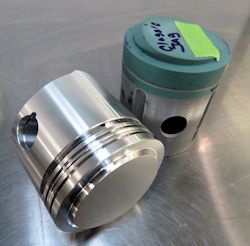 |
 |
The following sequence of photographs show the new one piece rear crankshaft seal that Corey designed and fabricated, and the process of creating a piston mold from which we will manufacture a set of custom forged pistons for the SS100 engine.
 |
 |
| New uprated one piece rear crank seal |
Piston mold allows us to optimize the design
of the forged pistons we will make for this engine |
| |
|
 |
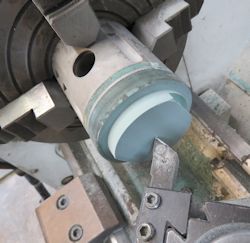 |
 |
 |
 |
 |
Huge thanks to Alan Gibbins of SS Spares in the UK who time and again has come up trumps when we have needed rare and obsolete parts for our SS100 restoration. Alan has also been kind enough to share his encyclopedic knowledge of the SS100 with me, which is very much appreciated!
One of our challenges with this particular engine rebuild is taking ancient old bearings and machining them to a specific 'eccentric' shape. This is not something typically discussed in modern engine building, although in vintage engine building it is sometimes necessary to take an oversized bearing and bore it until you have the desired clearance. This is a tricky enough operation to begin with, made even more so because the bearing surface itself has to be eccentric (not cylindrical). Half shell rod and main bearings do not have a wall of uniform thickness. The wall is thickest at the point of the split and tapers off a prescribed amount towards each parting line. This taper, or drop off, is called eccentricity. Eccentricity in the SS engine application is designed to promote oil film formation by creating a wedge shape in the bearing clearance space. In these circumstances, bearing clearances must be measured at 90 degrees to the split line.
I have included a short video clip below demonstrating how Kevin machined the bearings within the rod housing.
Corey has been busy in the CJ engine shop machining your cylinder head back to pristine condition.
 |
 |
| Intake and exhaust flanges surfaced on the
mill |
|
 |
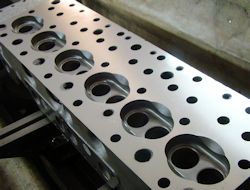 |
| Surfacing the cylinder head deck surface |
Deck surface and chambers literally as new |
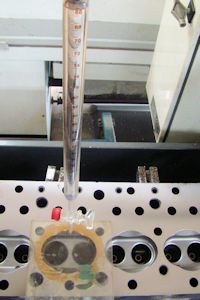 |
 |
| CC'ing chambers |
Checking original alloy rods for straightness |
Align honing the block, designing a one piece rear crank seal, damaged valve cover and oil filter housing...
Taking a closer look at the crank, rods and main bearings.
Engine tear down, continued....
Almost time to get a much needed engine rebuild underway!
 |
 |
 |
 |
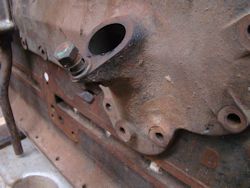 |
 |
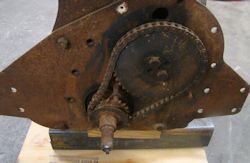 |
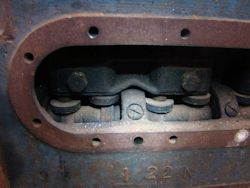 |
 |
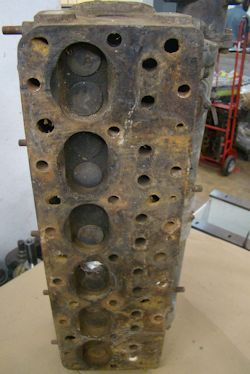 |
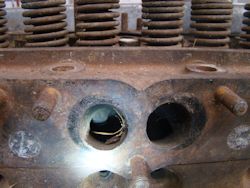 |
 |
Examining the tool roll in detail: I believe the canvas roll itself is from a very early XK120, as are most of the tools. Unfortunately, I don't think any of the tools were originally supplied with our SS100.
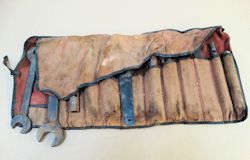 |
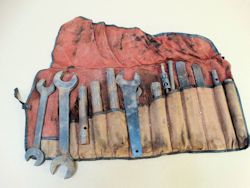 |
 |
 |
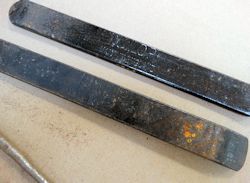 |
 |
 |
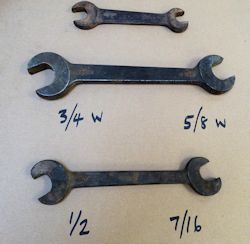 |
 |
 |
 |
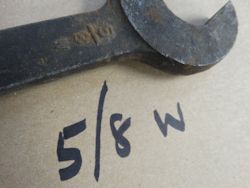 |